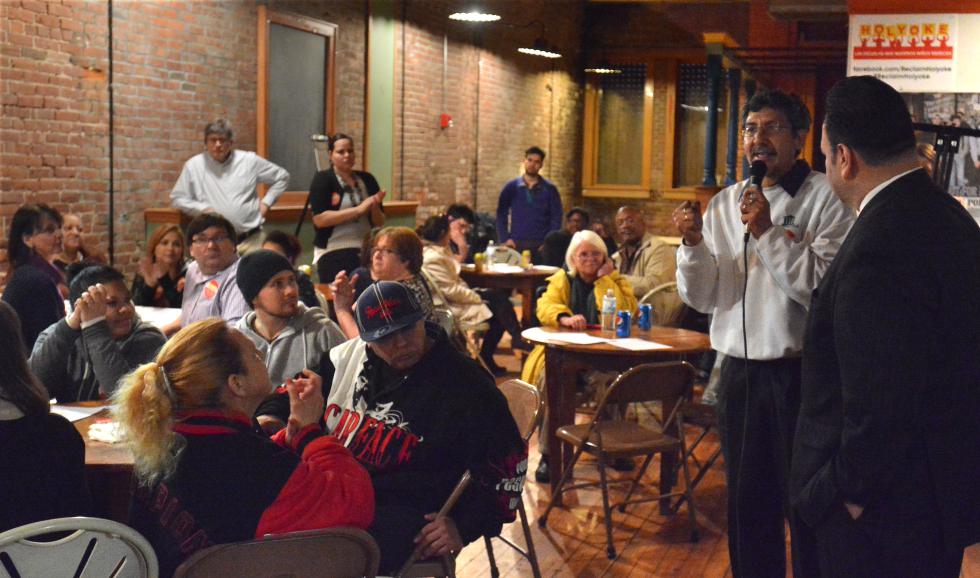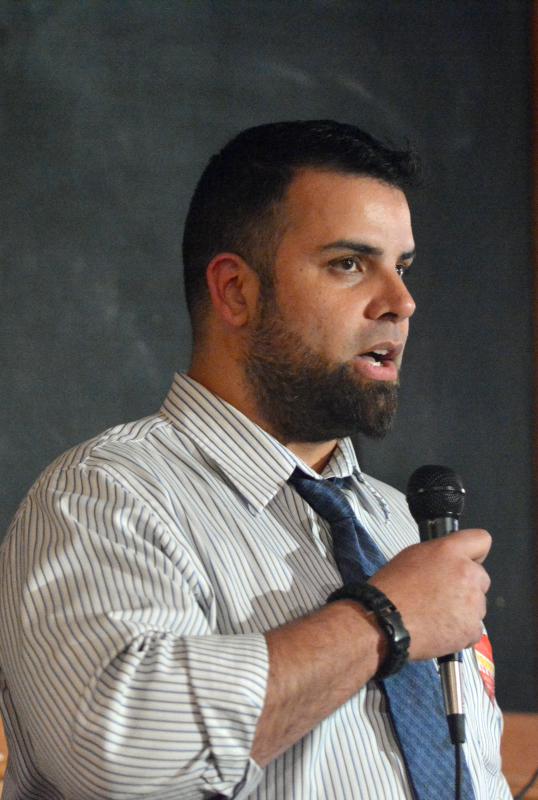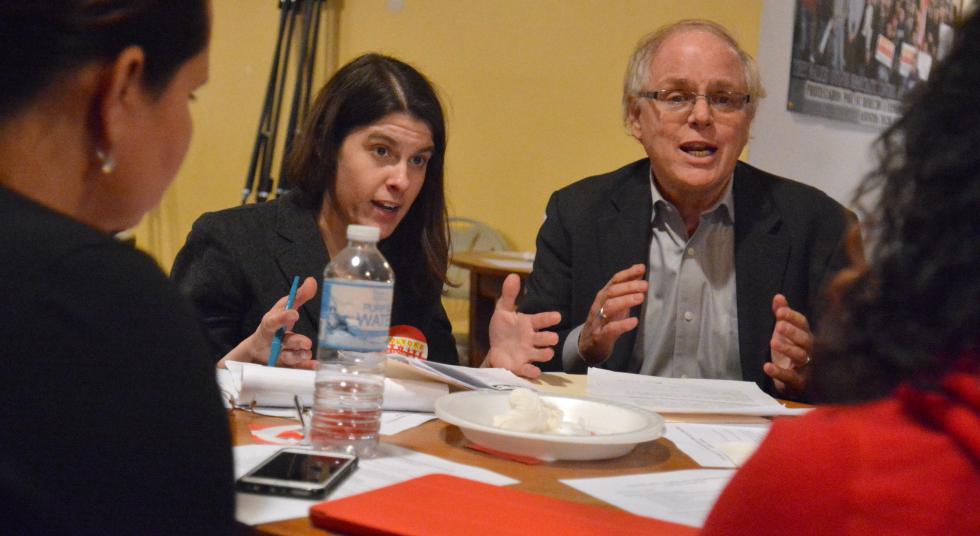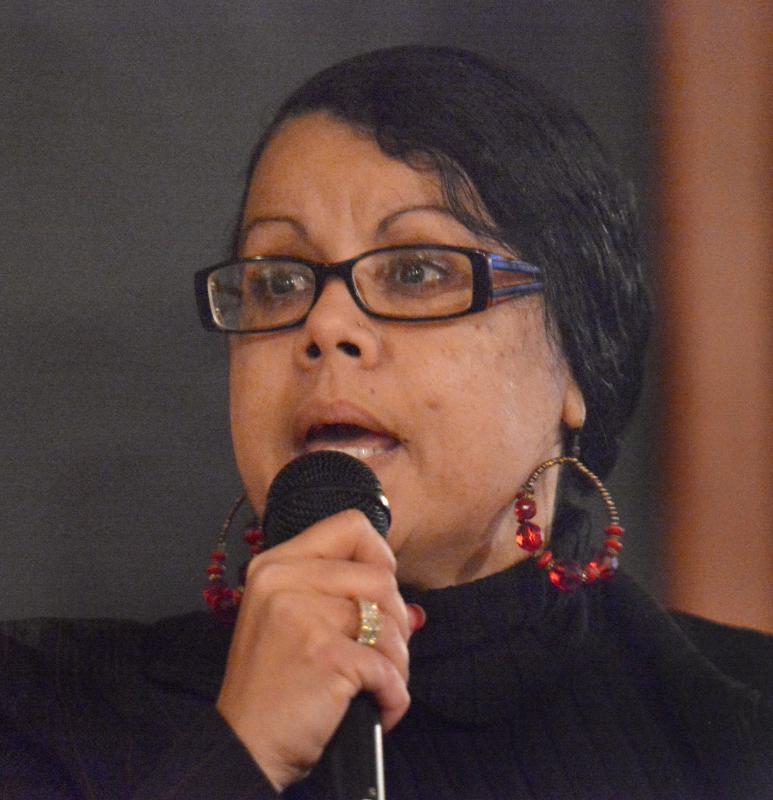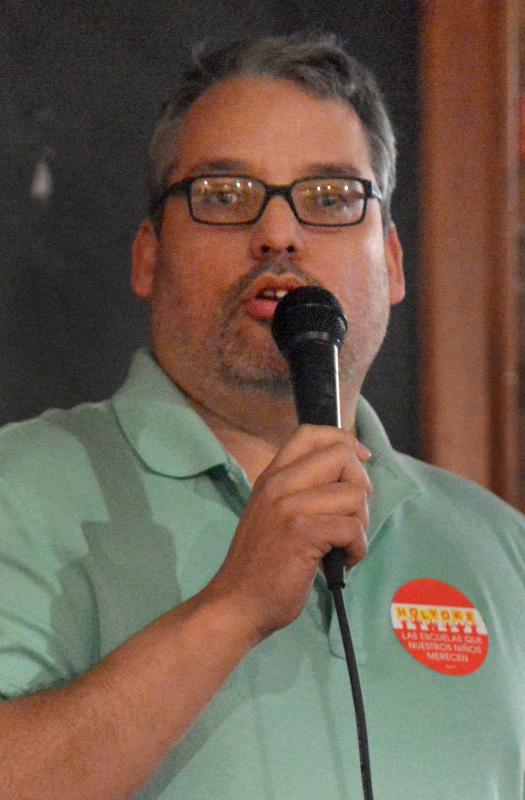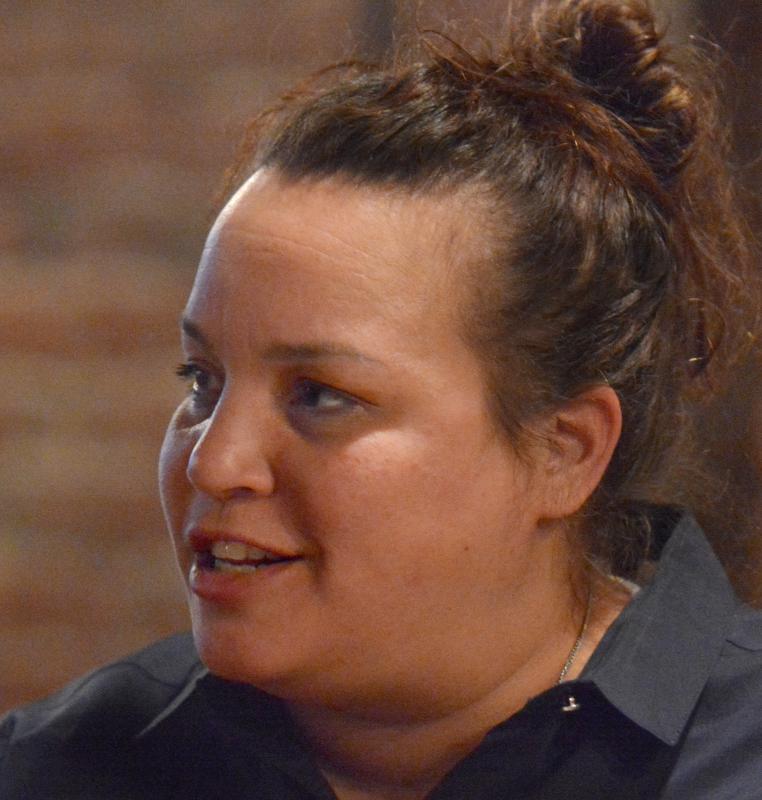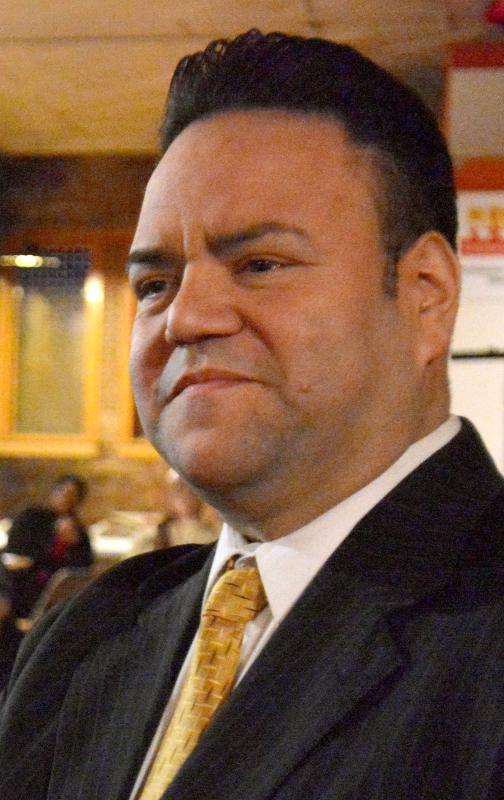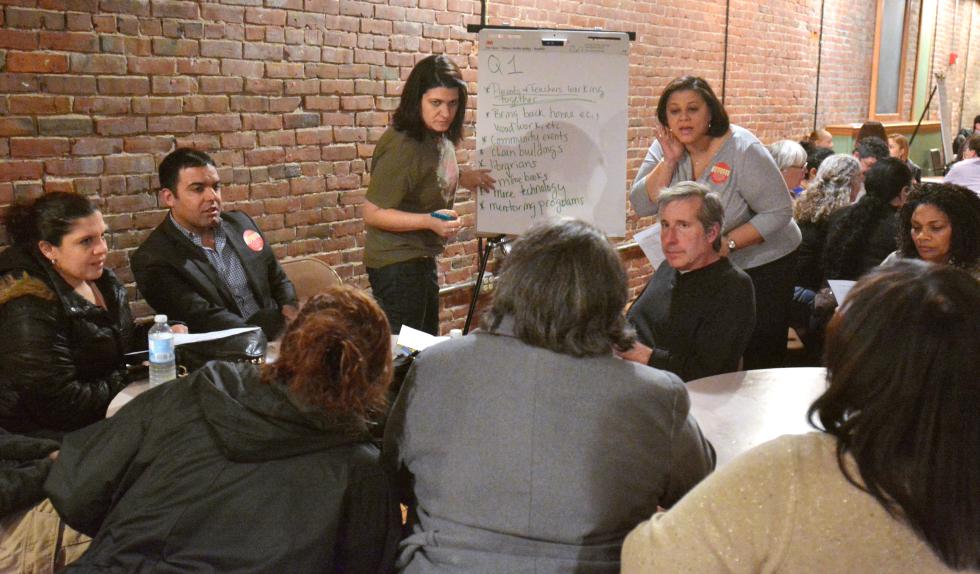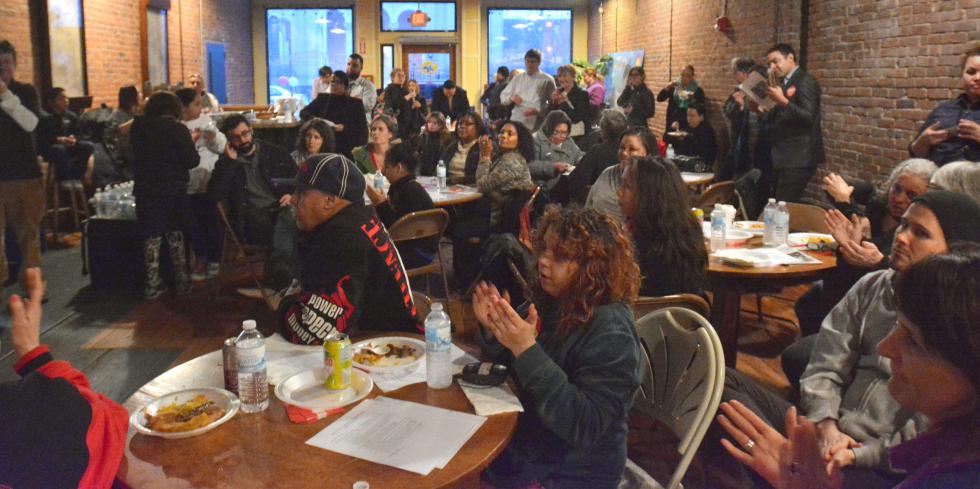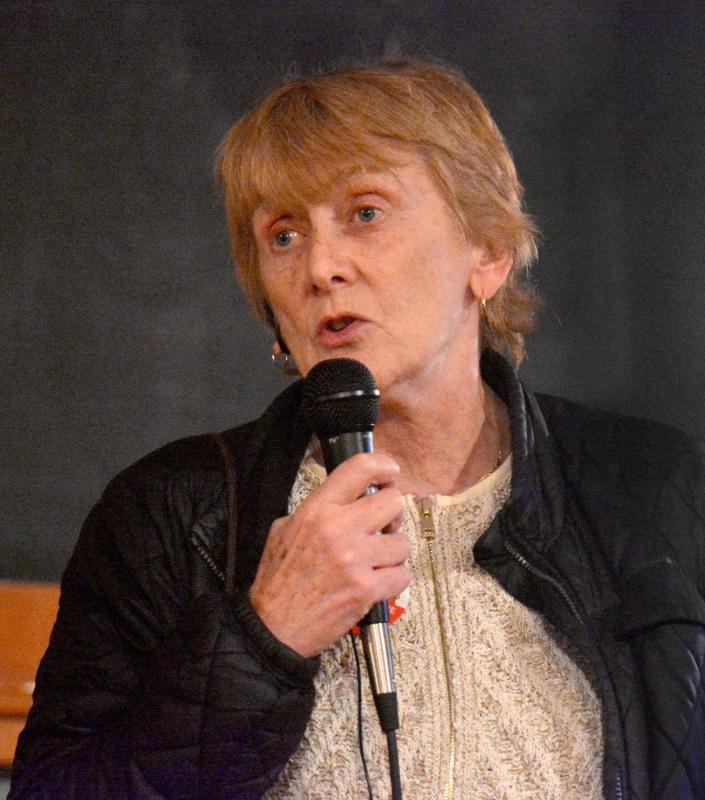Public education in Holyoke is a sticky issue, but most can agree on one point: improvement is overdue.
Holyoke has the worst high school graduation rate in the state of Massachusetts. The city’s public school dropout rate is three times the state average. In the past four years, about one out of three students has received “proficient” scores on the MCAS.
For more than a decade, the state has flagged the Holyoke school district as underperforming. Now, State Education Commissioner Mitchell Chester has raised the stakes by posing a new question to the city: Could someone else run the district better?
On March 24, Chester recommended the Holyoke school district go into receivership. This would mean that the Holyoke superintendent and school committee cede control over all district schools, and that Chester grant an outside organization the authority to turn things around — which would include the power to hire and fire school staff as it saw fit, regardless of union contracts.
The Holyoke school district will only go into receivership if the Massachusetts Board of Elementary and Secondary Education votes in support of Chester’s recommendation. Before that can happen, the board must hold a public forum on the issue — which is scheduled for April 27 at the War Memorial Building on Appleton Street in Holyoke. After that forum, the board’s vote will come no later than May 19.
This possibility has been looming for a while, but now that it is officially on the table, it has hit Paper City like a ton of bricks. And the loudest local response to the question of receivership is a resounding no. In February the Holyoke City Council approved a 13-0 resolution opposing the state takeover, and community forums organized by the Holyoke Teachers Association and by the activist group Reclaim Our Schools have popped up around the city in recent weeks.
At a meeting in February, members of the Massachusetts Board of Elementary and Secondary Education asked Chester whether students have been more likely to succeed since 2013, when Sergio Paez took over as Holyoke Superintendent of Schools. Chester said that he did not “see a trend.” At stake, Chester explained, are the futures of students in school today, not three or five years down the line. “These kids are being robbed of a future with the way things are going now,” he said.
The state first identified the Holyoke public school district as underperforming 12 years ago. Since then, roughly $13.5 million has come into the district in targeted assistance funds from the state and federal government. But the results are still dire. The 2014 graduation rate — 60.2 percent of students — is nearly 26 percentage points below the state average. The 2014 dropout rate in Holyoke is 6.4 percent, compared to a state average of 2 percent.
“It’s been well over a decade now that the state has been engaged in Holyoke,” said Chester, who has been commissioner since 2008. “When I arrived, I identified five school districts in the Commonwealth I was most concerned about: Holyoke, Springfield, Lawrence, New Bedford, and Fall River. Fast-forward to today, and in each of those other four districts we have work underway that I find promising and hopeful … The one district where I conclude that we are no further ahead is Holyoke.”
Some level of state control is not an entirely new idea to Holyoke. One of the district’s 11 schools, the K-8 Morgan School, went into receivership in 2014 and is currently finishing its first school year under the management of Project GRAD, a Texas-based nonprofit company that is also providing management support at Dean Technical High School on Main Street.
The superintendent and school committee still supervise Dean, but they have no control over what happens at Morgan until 2017 at the earliest. Project GRAD reports its performance directly to Chester and his staff.
In January 2014, following news that the Morgan School would go into receivership, teachers and staff met with state officials to discuss what would come next. One state staffer told the group that it was “likely” that teachers would need to reapply for their jobs. Another staffer described the upcoming performance evaluations as “rigorous and comprehensive.” They proved right. This school year, 11 teaching positions at the Morgan School were eliminated, and 85 percent of this year’s staff is new to the school, including the principal.
Daryl Ogden, the CEO of Project GRAD, said that the organization asked all teachers at Morgan to reapply for their positions. Those who were either re-hired or hired anew, he said, demonstrated a strong willingness to be a part of the turnaround effort, which has included expanded instruction for students who speak English as a second language and an increase in STEM (Science, Technology, Engineering, and Mathematics) programming. New principal Alyson Lingsch came over from the Springfield school district, he said, and the majority of the staff at Morgan are from Western Mass.
Regardless of how Project GRAD and the state measure the success of those programs, that still leaves nine other Holyoke schools fully under local control, and improving student achievement at those schools is priority number one for superintendent Paez, who stepped into the role in July 2013. Over the past 21 months he has written and distributed an Accelerated Improvement Plan for Holyoke schools, which includes some new programs already being implemented — such as the Holyoke Early Literacy Initiative and a dual language program at Metcalf School — and more still in the works, including additional STEM education and more alternative education programming.
On Thursday April 2, superintendent Paez sent a letter to Chester requesting that the board move the vote to decide on the fate of Holyoke schools up from May 19 to a meeting already scheduled for April 28.
“We have excellent educators who are considering leaving Holyoke,” Paez wrote, “not because they don’t want to work in our schools, but rather because they don’t know what to expect in terms of employment security and future leadership of our district — and it is extremely difficult to recruit talented educators for anticipated vacancies when the future is so uncertain.”
So here’s another question: Did the state give Holyoke and Paez enough time to work things out on their own?
The arrival of an outside supervising organization would disrupt programs just taking root, Paez has argued, to the possible detriment of students.
One recent initiative put in place by Paez, for example, doubled the amount of work hours allocated to what the school system calls “professional development,” in which teachers learn new techniques and strategies for classroom management.
Another Paez program, called “alternative pathways to education,” prompts students on the verge of dropping out to return to school for some alternative programs in order to get their diplomas. He is also putting in place a more focused tutoring program led by retired local teachers who are hired on a part-time basis.
Paez “was there on the ground all last school year to initiate change,” said Devin Sheehan, vice chairman of the Holyoke School Committee. “I don’t think anyone expected to see everything turn around in one school year … We didn’t see exponential growth, but there has been some small, incremental growth.”
Indeed, the report from the state’s February review of the district describes a “new sense of energy and accomplishment” within the schools, and by certain measures the 2013-14 school year was an encouraging one. The 60.2 percent graduation rate among Holyoke students in 2014 may be the worst in the state, but it is a significant improvement from 2011, up from 49.5 percent of students. And that 2014 dropout rate of 6.4 percent is actually down 2.7 percent since 2011.
According to the Office of the Superintendent, in 2014 the district saw other improvements since last year, among them a 53 percent reduction in the number of days of student suspension at Holyoke High School, an 86 percent increase in the number of Advanced Placement-qualifying scores earned by students at that school, and an increase of 1,887 days of attendance for students between kindergarten and third grade across the district.
Now seems a particularly bad time for the state to intervene, Sheehan said. “We’re not here to be a laboratory for what someone thinks will make good education reform. We’ve been adapting and trying new things over the past year. It would be very unfortunate if a whole new leadership team changed the good work that’s going on.”
This past fall’s MCAS scores for Holyoke students showed no noticeable improvement from previous years. But many of Paez’ programs were just getting started during that time, Sheehan said. “When we get results this October, I think we will see significant change.”
Paez did not respond to Advocate requests for an interview about school receivership.
But if the state board takes commissioner Chester’s recommendation, things will go very differently. Chester says slow growth over time is not what’s needed at this point, especially if it happens within the current structure of school administration. “It is indefensible to defend the status quo in Holyoke,” he said.
If the board votes to put the Holyoke district into receivership, one of the first things Chester said he will do is to convene a local stakeholder group in the city in order to get input and share ideas about what to do.
“We won’t do this in a vacuum,” he said. “We’ll develop a turnaround plan based on evidence for what is working.”
This is not an attempt to fault teachers, he added. “The system is not harnessing the ability for teachers and administrators to work together to yield strong academic achievement … In my estimation, this needs to be restructured and reformed top to bottom.”
This year’s 85 percent turnover in staff at the Morgan School certainly doesn’t indicate that receivership is easy on teachers. Those most likely to keep their jobs, Spencer said, are those interested in thinking critically about which programs needed to change, and how. “I would welcome staff who are willing to be part of the turnaround,” he said. “But one of the challenges here is that ‘business as usual’ is not going to achieve results for students.”
At an April 2 meeting in Holyoke organized by the activist group Reclaim Our Schools, Mayor Alex Morse said that the state of the public school system makes it difficult to sell Holyoke to outsiders. “The reality currently is we need families constantly wanting to move to Holyoke, and realtors in this room will tell you that families are concerned about the schools,” he said.
At that same meeting, City Council President Kevin Jourdain said that district-wide receivership would give “validity to the state knock on Holyoke, that we’re a lesser community … It’s just going to make our job that much harder.”
Sheehan said he is worried not only about attracting new residents to Holyoke, but also about retaining those already here. “We have to remember that no matter what happens, the schools will be open in September,” he said. “Receivership has little to no negative impacts on college acceptance. Students are still going to get a college education, and that will always be true. We don’t want families fleeing the cities because of this.”
On Thursday April 9, many families were doing the opposite. The sun was setting on Main Street in Holyoke by the time a small crowd had gathered in the warm, bright interior of the meeting space El Mercado. Parents, teachers, and concerned citizens were showing up for a Reclaim Our Schools community forum.
For the first half-hour of the gathering, the tone was festive: attendees helped themselves to plates of fried chicken, plantains, and rice catered by the Puerto Rican restaurant Salsarengue, then sat together at large round tables, laughing and chatting loudly.
But once the forum got underway, the discussion quickly sobered. Roughly 100 people listened quietly to a series of speeches by community leaders on the state of public education in the city, and the looming possibility of the state takeover.
“We aren’t going to let the state of Massachusetts dictate to us what we want for our education,” said activist and event organizer Darlene Elias. “Whether or not we get taken over, this is not the end of it. We are going to make sure our voices are heard.”
Ward 4 school committee member Irene Feliciano-Sims, who was also in attendance, said she thinks a lot of families are nervous about relating to school officials about the needs of their children. “They’re concerned that their opinion doesn’t matter,” said Sims, who attended Morgan and Holyoke High School, and who is now a mother of two. “We’re trying to tell them that their thoughts and feelings do matter. They’re residents of the city, and they’re invested, no matter what neighborhood they live in.”
But deep-seated disparities in opportunity can’t be ignored in Holyoke, said Josh Garcia, a father of twins and former Ward 1 member of the school committee. “The state takeover is one problem, but we want local control so much right now that we forget there are problems with how things are structured,” he said.
South Holyoke, he explained, is the poorest part of the city, and the neighborhood school there — the Morgan School — is the only one already under receivership. That’s no coincidence, he said. “If we can’t fix our existing problems, we’re always going to end up back where we’ve been.”•
Contact Hunter Styles at hstyles@valleyadvocate.com.

